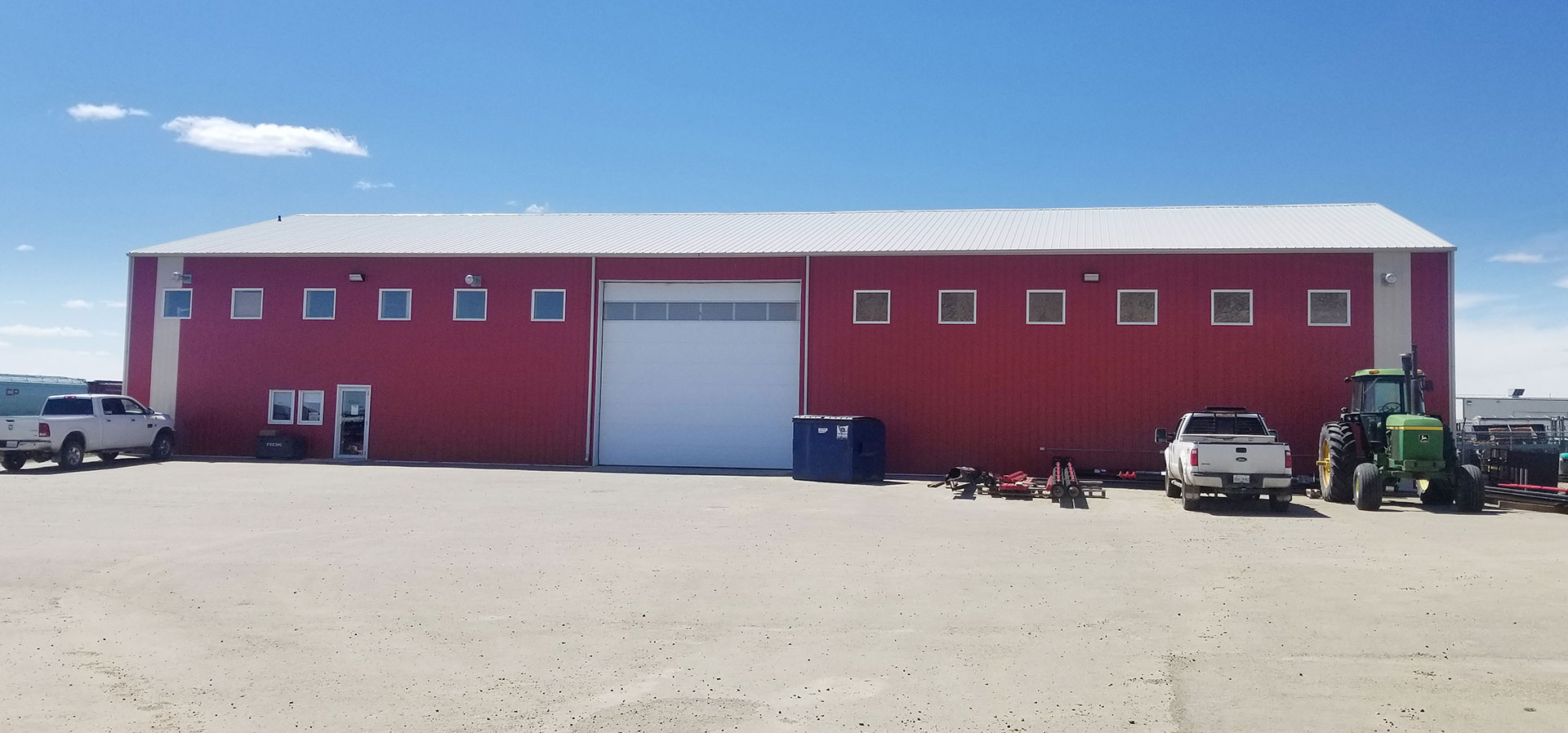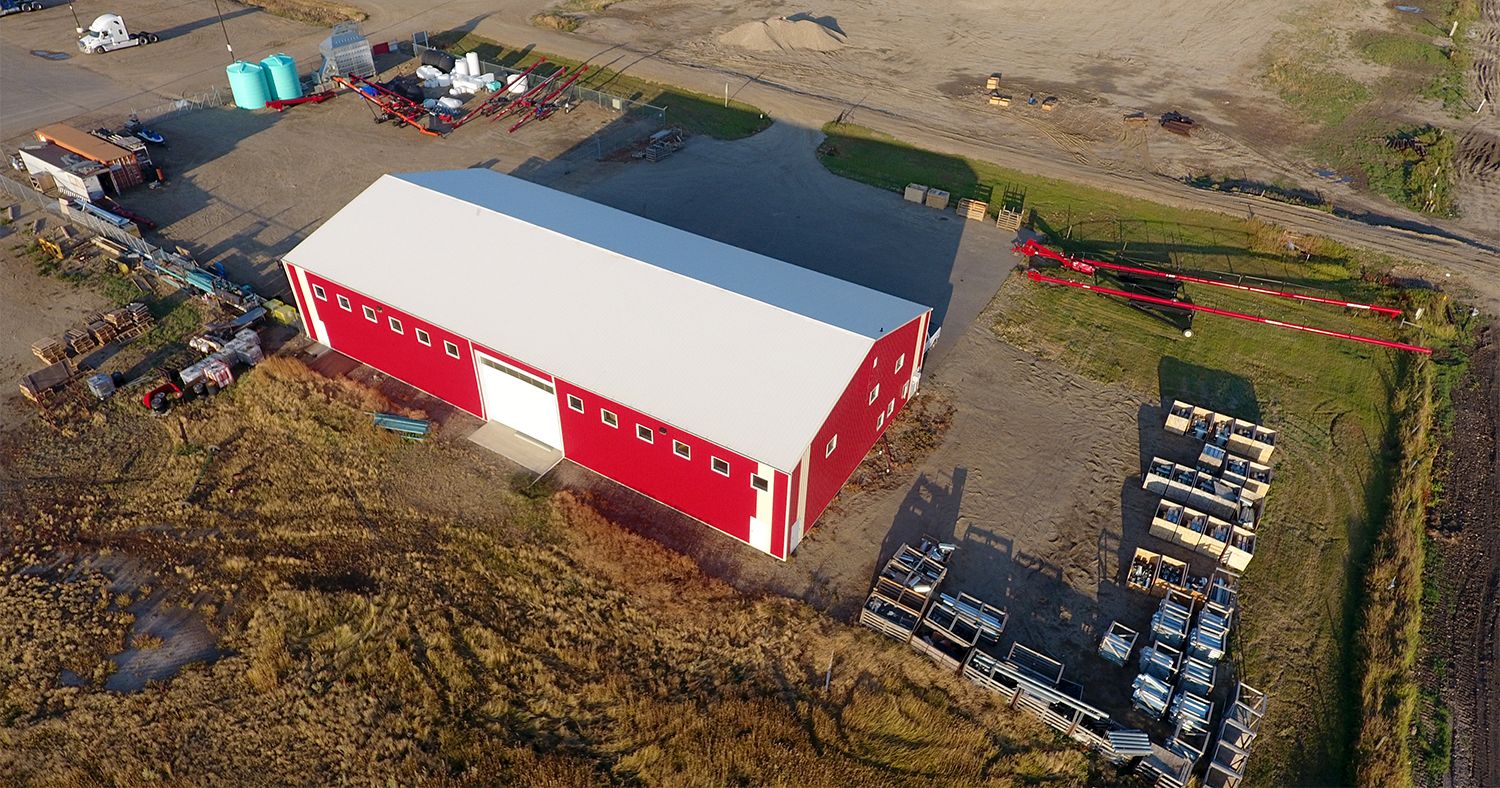Flaman Rentals Blog
RSS feed
Categories
Recent activity
- What's it like being a Flaman Rental Dealer?
- A Brief History of the Newest Flaman Store in Swift Current
- Disney's NEW Leadership Excellence Training Course
- Disney's Approach To Quality Service
- Disney's Approach To Quality Service
- Trailering 'Rules of the Road' Updated
- 10th Annual Frank J. Flaman Foundation Gala 2016
- Why Frank Cares
Authors
Archive
A Brief History of the Newest Flaman Store in Swift Current
Posted by Jennifer Thompson Jul 07, 2020
Flaman Group of Companies started on the farm over 60 years ago, when founder Frank Flaman saw a way to help other farmers by buying bins in bulk. That spirit of “making things better” for the farming community continues on today, so when Flaman had the opportunity to partner with an innovative, farm-focused company like Gatco Manufacturing, known for its quality products designed for farmers, the choice was easy.
The Flaman Swift Current and Gatco location
Products Designed by a Farmer, For Farmers
Gatco was started by a Saskatoon area farmer, Gary Schreiner. Schreiner had a problem: he was losing canola bins to overheating and needed a solution for remote bin yards that had no power. He began trying different combinations of perforated tubes in an effort to create a venting system inside the grain bin. This led to the creation of the GrainAir Tube powerless aeration system. The GrainAir tube allows heat and moisture to escape the bin quickly, by letting heat collect in the central tube and relying on convection to remove heat from the bin without any fans.
A couple year’s later, Schreiner was moving his load out auger and plastic hopper in his yard and slipped while maneuvering the plastic hopper. He knew there had to be a safer way to do this, and so the Auger Hog Hopper was born. This adjustable, detachable grain auger hopper attaches and detaches in seconds with a single mount pin, stays on your auger between bins, and adjusts from 12" to 29" in height merely by moving the handle. Due to the Auger Hog’s u-trough design, it also increases the average augers speed by 20-25% and prevents any product loss.

The Auger Hog
With the GrainAir tube working well, Schreiner felt there had to be a way to make a more efficient aeration system. While researching grain dryers, he found that air moved through grain easier horizontally, so he developed louvered wall columns that were pressurized with a common aeration fan. The air would leave the wall columns and travel horizontally to the central GrainAir tube and be released out through the bin lid quickly and easily. This CrossFlow system is far more efficient than traditional air systems, as the air travels less distance and moisture and heat is removed from the bin much faster.
“Gary came up with these unique solutions to help make farming easier,” says Bret Watson, Gatco division manager, who’s worked for the company since 2013.
 Bret Watson (Gatco Division Manager & Flaman Operations Manager)
Bret Watson (Gatco Division Manager & Flaman Operations Manager)A Natural Partnership in Swift Current
It was that line of innovative, farmer-proven products that made Gatco a natural fit to join the Flaman team, says Watson, who is also the operations manager for Flaman’s Swift Current location. Gatco was purchased by Flaman Sales in 2018, when Schreiner decided he wanted to devote more time to his farming operation. “The companies are both family-owned and started on the farm,” says Watson. “We were selling to the same customers and trying to provide that same level of service. It was a nice, natural fit.”

With that purchase, Flaman Sales started their 7th store in Saskatchewan. The Swift Current location began as one-person business with Watson, but since February 2020 has added 5 more staff in sales, administration and yard staff, along with acquiring a second, 4-acre yard to expand on-hand inventory and provide better sales and service.

Mellissa Paxman (Administration), Bruce Deg (Ag Sales), Brittany Fiddler (Logistics Coordinator), and Rick Spanier (Yard & Support)
The Swift Current store is a full-service Flaman Agriculture equipment dealership, offering a wide range of in-stock grain-handling equipment such as augers, conveyors, post pounders, grain vacs, grain carts, grain bins, grain dryers, grain monitoring, and water and fertilizer tanks. Customers can also order products from the Flaman catalogue like discs, mowers, chem handlers, pumps, and more.
 Bob Schafer (Ag Sales)
Bob Schafer (Ag Sales)“We’re proud to offer equipment options to the local community,” says Watson. “Farmers don’t have to drive to Saskatoon or Southey anymore. This location allows Flaman to serve customers all over southwest Saskatchewan.”
-----
Want to learn more? You can view some products in inventory or contact our Swift Current location.
Posted in Division News | Tagged with agriculture Swift Current Flaman new store local shop local southwest Saskatchewan | More articles by Jennifer Thompson
Rain, Rain Go Away
Posted by Mark Flaman Jul 02, 2013
Well, we've had about as much rain as a person needs for the rest of the year. It seems like it's been raining across the province non-stop for the last two weeks of June. We've seen an exceptional amount of flooding this year across western Canada, mainly in High River & Calgary Alberta, but the immense rain stretched and blanketed over Saskatchewan for almost the whole of the last two weeks of the month. In Manitoba and Saskatchewan, most farmers are at least a couple of weeks behind due to the late thaw of the snow, but as it happened, the thaw occurred too fast and now we're left with all this water.
It's one thing when you see it on the news, but recently I've been seeing it a lot first hand in Saskatoon as well as the RM of Corman Park, where out Saskatoon store is located. There are farmers with children that have to get off the bus and throw on their rubber boots just to get down the lane way. There are also acreage owners here that have to leave a vehicle at the end of the driveway, and come back and forth to the house with an ATV. There have been evacuees flooding in from northern Saskatchewan, from places such as Cumberland House who are staying at soccer & events centers around this city. These folks will thankfully be able to return home on July 3rd.
But yet, nothing compares to the damage being done in Alberta. There have been fatalities due to the flooding, and there are going to be millions in damages by the time this is all said and done. The Calgary Zoo had to relocate most of their animals, and had a few scares with losing some to the flood. The Saddle dome and Stampede grounds are under water, and several neighborhoods had to evacuate and relocate to drier ground. As our nation's fourth largest city is crippled by these floods, we stand by them as they can use all the support we have to offer.
The weather forecast shows that this is about it for the rain we're about to receive, and brighter days are ahead. We had a great Canada Day July long weekend, and we're going to be hovering around the 25 degree mark for the next two weeks with the exception of a little rain this weekend.
Posted in Local News | Tagged with rain flood flooding saskatchewan flaman alberta calgary high river news | More articles by Mark Flaman
We're proud to be an ABEX finalist!
Posted by Jennifer Thompson Oct 04, 2012
As a project manager for Flaman’s marketing team, I am proud and excited to announce we’ve once again been nominated for a Marketing Award. Flaman Group of Companies was named a finalist in the 2012 Achievement in Business Excellence (ABEX) Awards in the Marketing category.
Flaman Group of Companies
Refresh Enterprises Inc.
Century 21 Diamond Realty
S&E Trusted Online Directory
Silver Star Salvage

Posted in Division News | Tagged with award marketing ABEX business award Saskatchewan Flaman | More articles by Jennifer Thompson
New website, new dealers for summer 2011
Posted by Barrett Prokopie Jul 05, 2011
This spring has been a very different one for many producers in the prairies, from near disastrous flooding in the southern parts of Saskatchewan and Manitoba, to drought in northern Alberta and B.C. It seems that nothing is predictable in the agricultural sector anymore (if it ever was).
Posted in Division News | Tagged with rentals new website dealers ag equipment trailers Saskatchewan Alberta | More articles by Barrett Prokopie

 Locations
Locations



